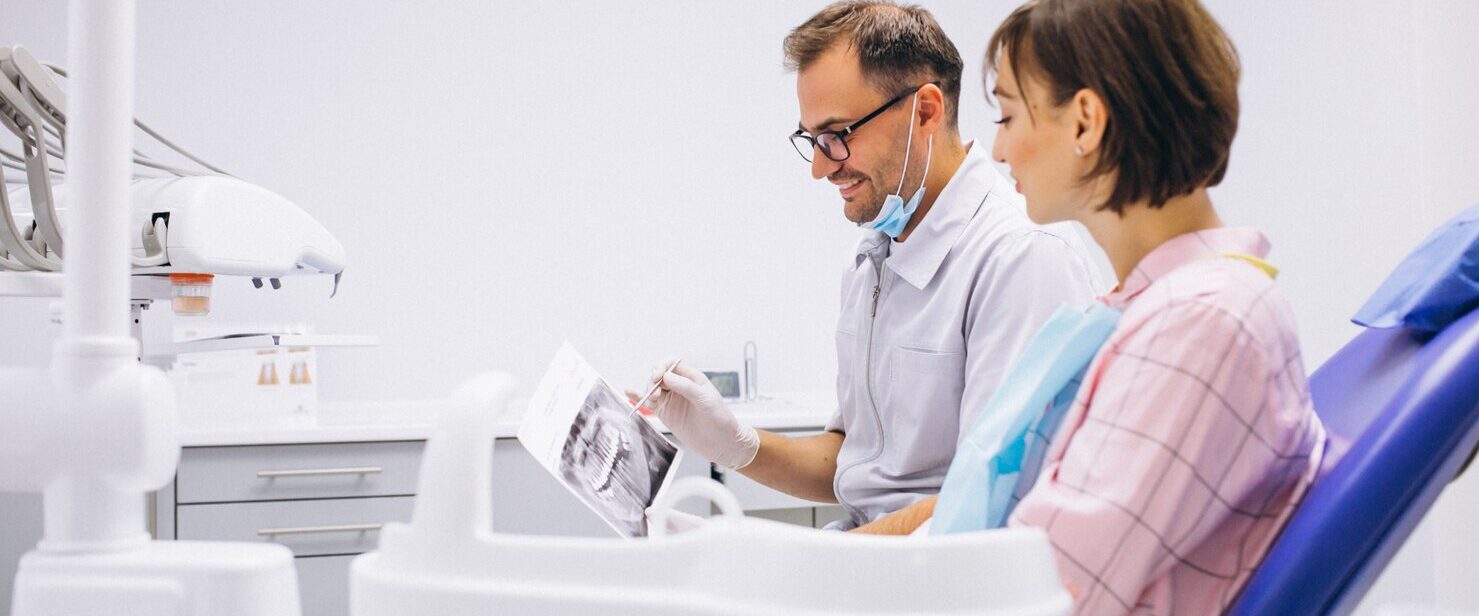What Does Periodontal Treatment Involve?
Periodontal treatment focuses on addressing gum recession and associated issues. Healthy gums exhibit a pink color, don’t bleed during normal activities like eating or brushing, and don’t show sensitivity at the tooth base.
Gingival recession occurs when the gum tissue surrounding teeth recedes, exposing the tooth and its root. This recession creates pockets or gaps between teeth and the gum line, where harmful bacteria can accumulate. Untreated gum recession can lead to significant damage to the supporting tissue and bone structures, potentially resulting in tooth loss.
Symptoms of Gum Recession
The primary indicator of gum recession is heightened tooth sensitivity. As recession advances, teeth visibly elongate, and looseness, known as luxation, may occur. Symptoms of gum recession include:
• Bleeding from the gums while brushing teeth
• Bleeding when consuming hard foods like apples
• Gum discomfort
• Development of spaces between teeth
• Sensitivity to cold or hot temperatures, and in advanced cases, pain during breathing
• Gum sensitivity
• Discoloration or redness of the gums
• Gum inflammation or swelling
Why Does Gum Recession Occur?
Gum recession can stem from various factors, including poor oral hygiene and genetic predisposition. Key causes of gum recession include:
• Using a toothbrush with very stiff bristles
• Periodontal diseases affecting gum tissues
• Brushing teeth in the wrong direction or with excessive force
• Severe misalignment of teeth
• Heavy buildup of tartar and bacterial plaque due to poor hygiene
• Severe systemic conditions like uncontrolled diabetes
• Smoking, which contributes to gum disease development
• Improperly placed crowns and fillings
• Deficiency in vitamin C
• Genetic predisposition
• Aging
• Teeth grinding or clenching
• Gum inflammation leading to degenerative changes
• Weakened immune system due to poor nutrition
• Use of medications such as heart medications, antidepressants, and birth control pills
• Hormonal changes during pregnancy and menopause
How is gum (periodontitis) treatment performed?
A patient who knows the cause of the formation of gum diseases, the progression of the disease and its possible consequences will be more conscious in the treatment stages of gum disease and will be very effective in the success to be achieved. Physician-patient cooperation is very important in the treatment of the disease. Treatment success will be much higher in patients who know the damages of bacterial plaque and how to clean it.
In the treatment, first of all, all tartar around the teeth is cleaned with special tools and ultrasonic devices and polishing (polishing) is performed on the tooth surfaces.
Depending on the degree of inflammation, in some cases, deep gingival cleaning called subgingival curettage is applied to the gingival pockets and root surfaces under locally applied anesthesia. In some cases, especially in acute gingival infections, antibiotics are used to support treatment.
Antibacterial mouthwashes are usually recommended. In more advanced cases of gingivitis, the gums are removed from the tooth surfaces and bone tissue under local anesthesia and the root surfaces, inside the gums and bone surfaces are cleaned of all inflamed tissues.
In some cases, bone grafts and bone powders that help bone formation are placed and the gums are sewn back into place.
How can Gum Recession be Prevented?
One of the most effective measures for preventing gum recession is maintaining oral hygiene. Additionally, the following steps can help prevent gum recession:
• Regular dental check-ups
• Establishing a routine of regular tooth brushing
• Using the correct toothbrush with soft bristles
• Adopting proper brushing techniques
• Regular professional tartar cleaning
• Quitting smoking
• Paying attention to diet
What are the potential complications of gum recession?
The most significant consequence of gum recession is tooth loss.
Frequently Asked Questions About Gum Recession
What is the relationship between gum recession and other dental conditions?
Systemic diseases like diabetes, genetic predisposition, aging, hormonal changes, stress, and teeth grinding/clenching are among the risk factors associated with gum recession.
Which vitamin deficiency causes gum recession?
Gum recession can occur due to a deficiency in vitamin C in the body.
How is gum recession surgery performed?
Gum recession surgery, also known as flap surgery, involves creating small incisions in the gum tissue to facilitate cleaning. After the removal of bacteria from the gum tissue, the incisions are sutured.
How to treat gum inflammation?
The treatment of gum inflammation depends on its severity and may involve procedures such as scaling and root planing, as well as advanced periodontal therapies and medication, if necessary. These methods aim to clean the gum inflammation effectively.
Let's Plan Your Treatment Together.
With 20 years of experience and expert dental professionals and consultants, we welcome you to Alfadent Clinic.
Contact us to discuss your personalized treatment plan.


